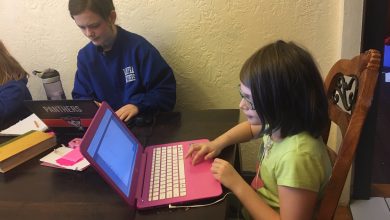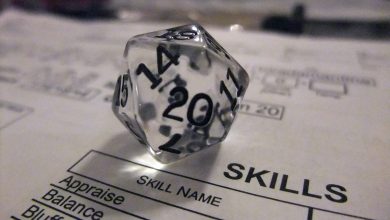Fireworks for Sensory Sensitive Families
A Personal Guide to Surviving Fireworks Displays

It’s the 4th of July, and in our corner of the U.S, it means lots of fireworks—loud, bright, and surprising fireworks. Our community fireworks display was earlier this week, complete with its crowds and noise. All of these factors have been prohibitive for our family in the past— members of our family struggle with the noise, crowds and chaos too much to make attendance at these events worth the extra planning required to go.
But, this year, our kids really wanted to go, so we made the effort to navigate the community fireworks event successfully. A good time was had by all, and perhaps it will be the same for you. (Taking my cue from dislike of online recipe posts that require you to wade through eighty years of personal history to get to the recipe, I’m going to start with the plans for success and let you all know how they went for our family afterward).
Plan Ahead
Talk about the event. Explain the noise level, and watch videos of fireworks displays. Ask your family member if they want to go. In the past in our home the answer has been “no.” This year it was “yes.”
Scout a location. Consider choosing to sit outside of the official watching areas. There are less people, and you are further from the noise. It also allows you to sit near (or even on) your vehicle. Further, it lets you leave more quickly if necessary. Have your child choose very comfortable clothing or pajamas and put them on before going to bed. If the person with you is older, suggest they choose clothes that are comfortable.
Pack all your tools. Does your family member have a fidget or a comfort item? Take it. Take the noise cancelling headphones, the blanket, the weighted blanket. Take whatever it is they need typically for surprising or chaotic and noisy places because fireworks is all of that. Plan to deploy them as your plan A, so make sure they’re as portable as possible. Bring an extra of each for the car if you have them.
Consider all the contingencies
What will you do if people near you set off their own fireworks? What will you do if people need to use the restroom? What will you do if it is too loud? What if there’s a meltdown during? After? Let yourself be ok with just not going. We’ve skipped the official fireworks for years and survived just fine. Very few events are genuinely necessary.
Have a Plan A, B, C, etc.
Our Plan A: sit near the car in comfortable fold out seats with all the tools available. Make sure our kiddos have on their ear defenders. Have the weighted blanket on our child’s lap. Get there early but don’t wake up the most sensory sensitive kid until just before the fireworks begin. Bring drinks.
Our Plan B: hustle the kid to the car, buckle them in and cover them up. Keep noise cancelling headphones on. Start the car and run the fans on high in the hope vibrations and noise will help the noise outside the windows seem calmer. Bonus if you can park the car so the kids’ window faces the fireworks so if they want they can watch from the safety of the car. This is where your “extra of each” comes in handy. If you have to hustle to the car, then you may not have the items you need—storing an extra blanket, set of headphones, etc in the car means you have it immediately, which greatly increases the likelihood that plan B will work.
Our Plan C: the person in the car with the sensory kid will drive away for the duration of the fireworks. This plan is risky if more than one kids I sensory sensitive. Drive back after the fireworks. Going against traffic will make that easier than you may expect. This is also a good reason to park outside of the official parking area since once you leave re-entrance may be difficult.
Our Plan D: we all leave when one person suggests “plan d.” This happens immediately and without overt regret or discussion. We go. We try again next year. It’s just not a big deal. When we leave we do so with the knowledge that just getting to the location was a big step forward.
How it went for us:
Planning ahead. On the day of, we scouted out the location. Where would we sit? Where would we park? We opted for a spot away from the official viewing area, but where we could see most of the fireworks. It meant that there were fewer cars and people, and that we could sit very close to our car. It had the added benefit of being further from where the fireworks were being set off, which made them a little less noisy. We discussed plans A-D with our kids so they knew there were options if the fireworks were overwhelming.
We didn’t do naps for the kids that day, because neither of our kiddos responds well to napping, instead we maintained order exactly. The visual calendar included the fireworks, but the rest of the day was a perfect example of routine. The only deviation was to visit the place where we would watch the fireworks and discuss this with our kids. We put them to bed on time, and one of them even slept.
While they were resting, we loaded up the car with water bottles, comfort items (stuffed animals, blankets, books (which in retrospect made no sense because it was dark. . .sigh), noise blocking headphones, the weighted blanket, and the very-big-kid carrier.
Then we carried the kids to the car. They’re getting big but still carry-able. One was excited, the other was sleepy. I draped a blanket over him. We parked early and got a spot near the car. The sleeping kid stayed in his seat and slept covered completely by the blanket the awake one hung out with the other adult while they staged most of our tools at the camp chairs. We had many of the same tools in the car also, which turned out to be perfect.

I started to wake him up about 10 minutes before the fireworks began. And we walked over to the seat. He was excited and couldn’t wait for the show to start. There are always people setting off personal fireworks though, so the surprising pops were, well, surprising. Fortunately, he had his ear defenders on.
And then the show started. . .
As the first boom of fireworks faded away, my child said “Let’s go home.”
And I guess that’s where the long-term pre-planning paid off. For years, this kid has gone to an occupational therapy center in which the therapist begins each session asking “what does your body tell you it needs today?” He pauses, pays close attention to how he is feeling, and then answers her. And she listens to him. Over the years, he has developed the confidence and awareness of his body and brain to know when something is too much. He also knows that when he tells us, our job is to listen.
So we moved to plan B. we walked to the car, as fast as we could, forgetting the keys in my hurry, but that’s where a good partner/friend comes in. I bundled him in, buckled the seatbelt, put his blanket over his entire body as it had been when he was asleep, laid the weighted blanket on top of it, started the car, turned the fans to high and paused.
I would drive him away if need be (plan C), but all the way home wasn’t an option. There were two people who would need a ride in 20 minutes. I handed him a water bottle and waited for signs that he was still agitated. The sound of the fan reduced the echoing booms to thuds, and his body calmed under the blanket. After a few minutes, he said “tell me a story.”
And so we spent the fireworks in the car, making up stories while the muffled booms continued. The car idled for part of the time, but as he grew more comfortable, we tried just the fans – and they worked. Eventually, he adjusted the blanket so it remained on his head but allowed him to see the fireworks, and he excitedly commented on them.
By the time the show ended, and the rest of the family joined us, he was happy and proud of successfully attending to the fireworks. Everyone enjoyed themselves that night – and everyone participated in the ways their bodies and brains could handle. His experience of fireworks is no less exciting just because it was through the window of a car with the noise dampened through a set of headphones, a blanket, a motor and fans. It was different, not less.
I think the problem for planning for events like this arises when neurotypical people like me assume that in order to truly enjoy an experience, our family members have to enjoy it the way we do, or in a way that we deem acceptable and therefore call “normal.” As a result, we may put together a plan B, but the plan is inadequate or should really have been part of plan A (access to headphones, blanket, etc should be the starting point not the fallback). We also discount the idea of just not going, or we use therapies designed to teach the neurodiverse person to mask their discomfort or tolerate high levels of discomfort so they can appear to enjoy themselves and we don’t need to have a plan B.
Our plans that day may not have been perfect, and they may be very different from what another family may plan, but the key is to have the plans in the first place that work best for the person who needs them. If we respect the needs and voices of individuals who struggle with the stimulation that occurs at these events and plan for all the contingencies that will prevent or address those challenges, then we can go to these events and everyone can genuinely enjoy themselves.
All photographs in this post come from pixaby.




